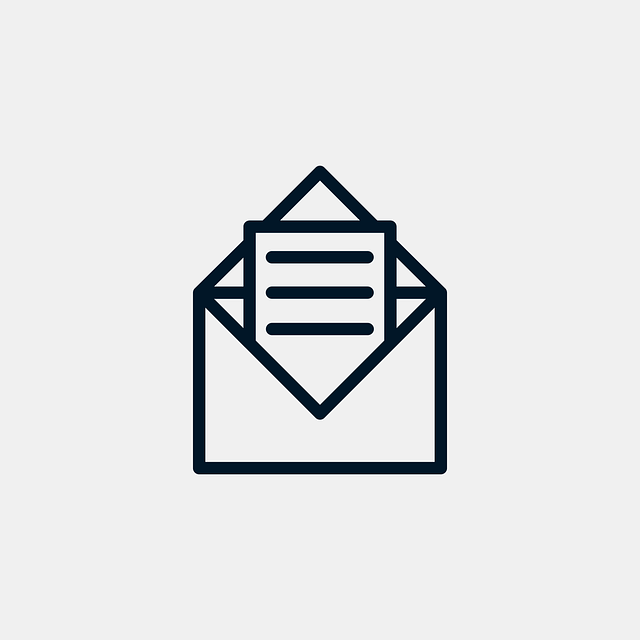Are you making these email marketing mistakes for your mobile app business?
In today’s digital age, email marketing is an essential tool for reaching and engaging with your customers. However, if not executed properly, it can have a detrimental effect on your business.
Picture this: you’ve put in countless hours developing your mobile app, only to find that your email campaigns are falling flat. It’s frustrating, isn’t it? But fear not!
In this article, we will highlight 10 common email marketing mistakes that mobile app businesses often make, so you can avoid them and maximize your success.
From inconsistent branding and design to neglecting personalization and segmentation, we will guide you through the dos and don’ts of email marketing for mobile apps.
So sit back, take notes, and get ready to revolutionize your email marketing strategy!
Key Takeaways
- Neglecting mobile optimization can lead to frustration, unreadability, missed opportunities, and a negative brand image.
- Personalization and segmentation are crucial for engaging with customers and increasing loyalty.
- Setting an appropriate email frequency is important to avoid email fatigue and unsubscribes.
- Testing and tracking email performance through metrics like open rates and conversions is essential for refining the email marketing strategy.
Inconsistent Branding and Design
Don’t let your mobile app business suffer from inconsistent branding and design – it’s a surefire way to confuse and alienate potential customers!
Branding consistency is key to establishing a strong identity and building trust with your audience. Make sure your logo, color scheme, and overall visual style remain consistent across all your email marketing campaigns. This creates a cohesive and professional image that resonates with your customers.
In addition, pay attention to the design elements within your emails. Use clean and visually appealing layouts that are optimized for mobile devices. Avoid cluttered designs that make it hard for users to navigate or understand your message.
Neglecting personalization and segmentation can further hinder your email marketing efforts, so let’s dive into that next.
Neglecting Personalization and Segmentation
Neglecting personalization and segmentation can lead to missed opportunities for connecting with your audience on a deeper level, resulting in a 73% decrease in customer loyalty. When your emails lack personalization, they become generic and fail to resonate with your subscribers.
By tailoring your messages to individual preferences and behaviors, you can effectively engage your audience and build stronger relationships. Implementing segmentation strategies helps you categorize your subscribers based on their demographics, interests, and past interactions. This allows you to send targeted content that is relevant and valuable to each segment, increasing the likelihood of conversions and customer satisfaction.
Don’t make the mistake of treating all your subscribers the same. Start personalizing your emails and segmenting your audience today to see the positive impact it can have on your business.
Overwhelming subscribers with too many emails can be just as damaging as neglecting personalization and segmentation.
Overwhelming Subscribers with Too Many Emails
When it comes to email marketing for your mobile app business, it’s important to set a frequency that is appropriate for your audience. Bombarding your subscribers with too many emails can quickly lead to email fatigue and potentially result in unsubscribes.
To avoid overwhelming your audience, make sure to send targeted and relevant emails that provide value and engage your subscribers.
Set a frequency that is appropriate for your audience
Make sure you find the right balance when determining how often to send emails to your audience, as setting a frequency that’s appropriate for them is crucial for the success of your mobile app business. To ensure you don’t overwhelm your subscribers, consider the following:
-
Test different frequencies: Experiment with different email frequencies to see what works best for your audience. Some may prefer receiving emails daily, while others may prefer weekly or monthly updates.
-
Analyze engagement metrics: Keep a close eye on open rates, click-through rates, and unsubscribe rates to gauge how your audience is responding to your emails. Adjust the frequency accordingly based on these metrics.
-
Ask for feedback: Send surveys or polls to your subscribers to gather their preferences on email frequency. This’ll help you understand their expectations and tailor your strategy accordingly.
-
Segment your audience: Divide your subscribers into different groups based on their preferences, behaviors, or demographics. This way, you can send targeted emails to each segment, ensuring they receive content that’s relevant to their interests.
By implementing these strategies, you can send targeted and relevant emails to avoid overwhelming subscribers.
Send targeted and relevant emails to avoid overwhelming subscribers
By tailoring your communication to match the interests and preferences of your audience, you can ensure your emails hit the mark without overwhelming your subscribers, like a well-aimed arrow hitting its target. Email automation is a powerful tool that can help you achieve this. By segmenting your subscribers based on their demographics, behaviors, and preferences, you can send targeted and relevant emails that resonate with them. This not only increases the chances of engagement but also reduces the risk of overwhelming your audience with irrelevant content.
To further illustrate this point, consider the following table:
| Subscriber Segment | Interests | Email Content |
|---|---|---|
| Fitness enthusiasts | Exercise, nutrition | Tips for staying fit |
| Tech enthusiasts | Gadgets, innovation | Latest tech news and reviews |
| Travel enthusiasts | Destinations, adventure | Travel guides and itineraries |
Measuring email success is crucial in determining the effectiveness of your strategy. By tracking metrics like open rates, click-through rates, and conversions, you can gain insights into what works and what doesn’t. This allows you to refine your email marketing approach and deliver even more targeted and personalized content to your subscribers.
In the next section, we will discuss the importance of not ignoring mobile optimization when it comes to email marketing.
Ignoring Mobile Optimization
Ignoring mobile optimization can be a costly mistake that hinders the success of your email marketing campaigns for your mobile app business. To ensure your emails are effective and engaging, consider the following:
-
Frustration: Mobile users expect seamless experiences. If your emails aren’t optimized for mobile, they may become frustrated and abandon your app.
-
Unreadability: Emails that aren’t optimized for mobile may appear distorted or difficult to read, leading to a poor user experience.
-
Missed opportunities: Without mobile optimization, you may miss out on capturing valuable user data and insights through mobile app analytics.
-
Brand image: Neglecting mobile optimization can negatively impact your brand’s image and credibility among mobile users.
By prioritizing mobile optimization, you can enhance user experience, increase engagement, and drive conversions for your mobile app business. However, failing to test and track email performance can also harm your marketing efforts.
Failing to Test and Track Email Performance
Failing to test and track email performance can hinder the success of your mobile app campaigns, impacting user engagement and conversions. It is essential to monitor how your emails are performing to ensure optimal results.
By neglecting email deliverability and A/B testing, you risk sending emails that may never reach your audience’s inbox or fail to capture their attention. A/B testing allows you to experiment with different elements of your emails, such as subject lines, content, and calls to action, to determine what resonates best with your audience.
Tracking the performance of your emails helps you identify patterns, understand what works, and make data-driven decisions to improve your email campaigns. Neglecting the importance of an engaging subject line can significantly impact the open rates and click-through rates of your emails, leading to missed opportunities and lower conversions.
Transitioning into the subsequent section, it’s crucial to optimize your subject lines to maximize email engagement.
Neglecting the Importance of an Engaging Subject Line
Make sure you captivate your audience right from the start with an enticing subject line that compels them to open your email. The subject line is the first thing your recipients see, and it has a huge impact on whether they actually open your email or not.
To ensure you grab their attention and maximize open rates, consider the following tips:nn1. Personalization: Use the recipient’s name or other relevant information to make the subject line feel tailored to them.nn2. Urgency: Create a sense of urgency by using words like ‘limited time offer’ or ‘ending soon.’nn3. Curiosity: Pique their curiosity by teasing valuable content or exclusive offers that they can only access by opening the email.
In addition to crafting a compelling subject line, it’s also crucial to leverage the importance of email automation and avoid spam filters. By automating your emails, you can send targeted, personalized messages at the right time, increasing engagement and conversions.
To avoid spam filters, make sure to avoid using excessive capitalization, excessive exclamation marks, and suspicious content.
Frequently Asked Questions
How can inconsistent branding and design affect the success of email marketing campaigns for mobile app businesses?
Inconsistent branding and design can cause confusion and erode trust in your email marketing campaigns for mobile app businesses. This can ultimately lead to low engagement and conversion rates.
When your branding and design elements are inconsistent, it becomes difficult for recipients to recognize and associate your emails with your app. This lack of recognition can make them less likely to engage with your emails and trust your brand, resulting in poor campaign performance.
What are some effective strategies for personalization and segmentation in email marketing for mobile app businesses?
When it comes to email marketing for mobile app businesses, personalization and segmentation strategies are essential.
To effectively connect with your audience, tailor your emails to their specific interests and preferences. Use data such as demographics, past behavior, and purchase history to segment your email list and send targeted messages.
Personalize the content by addressing subscribers by their name and offering relevant recommendations.
By implementing these strategies, you can increase engagement, conversions, and overall success of your email marketing campaigns.
How can overwhelming subscribers with too many emails negatively impact the engagement and retention of mobile app users?
Overwhelming your subscribers with too many emails can have a negative impact on the engagement and retention of mobile app users. When bombarded with a high email frequency, users may become frustrated and unsubscribe from your list.
Additionally, if the email content lacks relevance or value, users are less likely to engage with your app and may even uninstall it.
To maintain a positive user experience, it’s crucial to strike a balance between frequency and content that resonates with your audience.
What are the key elements to consider when optimizing email campaigns for mobile devices?
To optimize your mobile app email campaigns, consider key elements that enhance mobile app user engagement.
Start by ensuring your emails are mobile-friendly, with responsive designs and easy-to-read fonts.
Use compelling subject lines to grab attention and personalize your messages to make them more relevant.
Include clear and concise calls to action that drive users to take desired actions within your app.
Regularly test and analyze your campaign performance to make data-driven improvements and continually optimize your strategies.
What are the consequences of neglecting to test and track email performance for mobile app businesses, and how can they improve in this area?
Neglecting to test and track email performance for your mobile app business can have serious consequences. Without proper tracking, you won’t know how your emails are performing or if they are reaching your intended audience. This can result in wasted resources and missed opportunities for engagement and conversions.
To improve in this area, make sure to regularly test your emails on different mobile devices and track important metrics like open rates and click-through rates. This will help you optimize your email campaigns for mobile devices and drive better results.
Conclusion
In conclusion, don’t let your email marketing efforts for your mobile app business fall flat. Avoid the common mistakes that can turn off subscribers and hinder your success.
Make sure your branding and design are consistent, personalize and segment your emails, and don’t overwhelm your audience with too many messages.
Don’t ignore the importance of optimizing for mobile, and always test and track your email performance. And remember, a catchy subject line can be the key to engaging your audience and getting them to open your emails.
So, don’t miss the mark – take the time to get it right!








